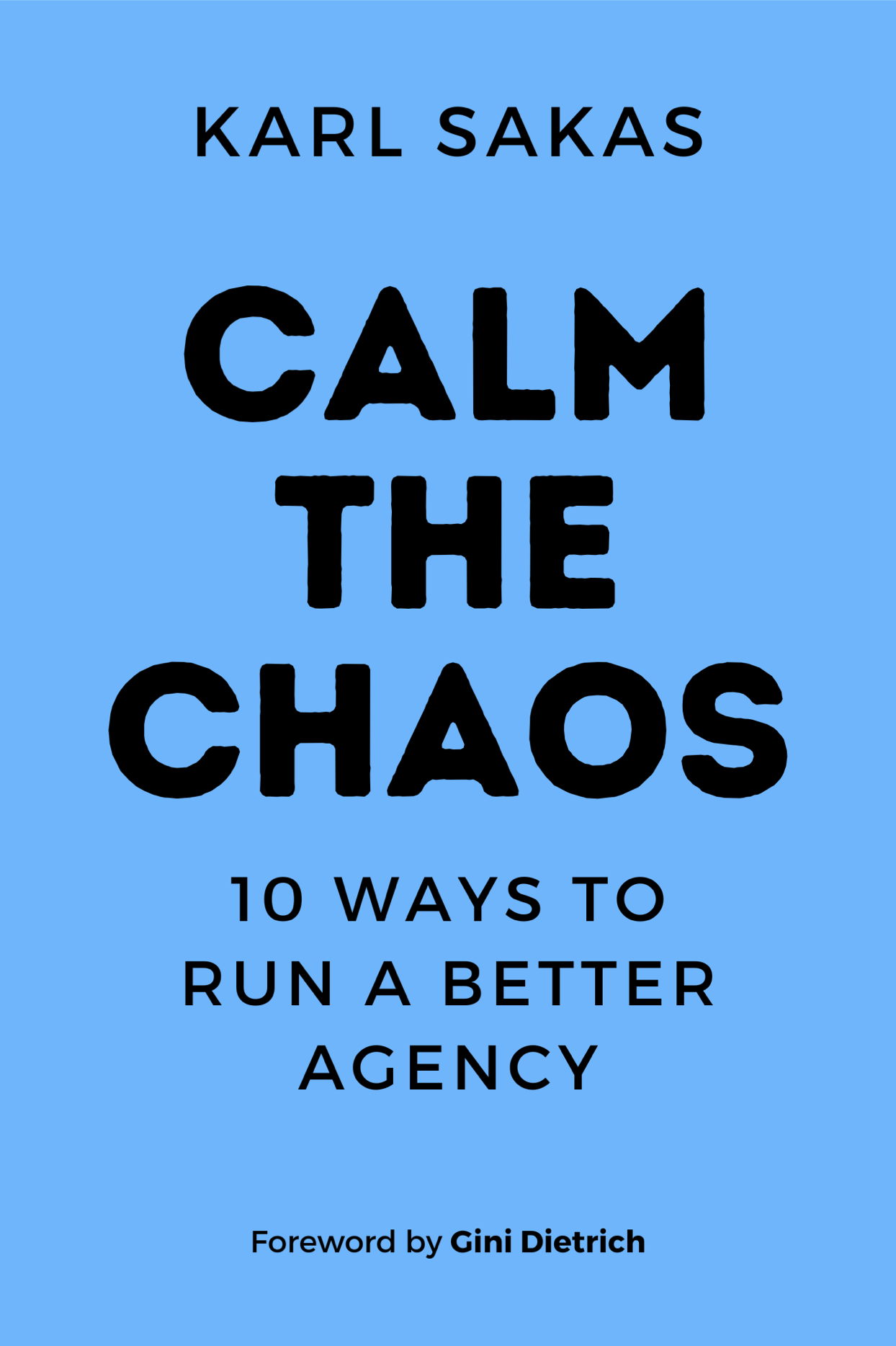Not sure what to include in your agency’s Employee Onboarding checklist?
Fortunately, you don’t have to start from scratch! In this article, I’ll share an employee onboarding checklist for you to implement, so you can jumpstart things at your agency.
For more on my philosophy, see my earlier article about Employee Onboarding process in general. A checklist is important, but you need the right mindset first.
Ready to upgrade (or start) your employee onboarding process? Consider these points in your checklist!
A) Demonstrate “Warmth” as soon as they accept the offer
Your agency is likely small enough that when a new employee joins, it’s a big deal—and you want to show new people that you care about them joining. This is part of Warmth & Competence.
- Coach them to be ready for a counter-offer from their current company. Walk through their points on why they’re leaving, so they can think about how the counter-offer [likely] doesn’t fix those concerns.
- Send them a mailing of your agency’s “swag” and other promotional products.
- Send a design proof of their business cards to review (if applicable), within a couple days of their acceptance. This shows you’re looking forward to their joining, and it’s really going to happen.
- Ask a team member—ideally a future peer—to record a brief welcome video. Short is OK—the key is a heartfelt comment about why they’re looking forward to having the new person on board.
- Give them a budget for office supplies—and potentially office equipment, if they’re working remotely.
- Send them copies of the new-employee paperwork to sign, so they have less paperwork to complete on their first day (and so they have more time to review things).
- Make them feel welcome on the first day. Have someone (their boss, ideally) take them to lunch—or meet for virtual “coffee” if they’re remote.
- Think through how to integrate with the rest of the team. If you’re hybrid or in-person, this might be a team lunch later in the week.
B) Take care of the technology before their first day
Onboarding should include even really basic things—things that are so obvious to you and everyone else. Why? Because they’re a big deal for someone who’s never been there before. It’s like when you pick up a rental car at the airport—as you exit the parking garage, you’re cautiously getting used to the controls and handling, but by the time you return it before flying home, it’s all comfortable. Which brings us to the topic of Warmth…
- Ensure new employees’ computers are ready on day 1. This includes shipping them their laptop, if they work remotely.
- Ensure email accounts are ready on day 1, or perhaps (for high achievers) even sooner.
- Ensure they have access to Google Drive and other technology systems on day 1. This includes sharing a list of the URLs, usernames, and passwords (or delegated access to a password manager), since they won’t automatically know where everything “lives.”
- Ensure they have links to access templates and SOPs.
C) Create a new-hire ramp-up plan
Consider how long people need to get comfortable with the company. Ideally, you don’t expect people to start doing billable work their first few days. And if you can push that out to the second week or later? You’ll likely find that new employees are happier and more productive, because they aren’t starting “underwater.”
Creating a supportive onboarding process is crucial for setting new employees up for success and promoting a healthy work environment. A good manager recognizes the importance of giving new hires the time and resources they need to get comfortable with the company and their role. By taking the time to properly onboard new employees, managers can help them feel valued and supported, ultimately leading to better job satisfaction and productivity in the long run. Additionally, this approach can also improve retention rates, as employees who feel supported and valued are more likely to stay with the company for the long term.
- Set “ramp-up milestones” for performance you expect at each point (e.g., 1 week, 2 weeks, 1 month, 2 months, 3 months). Some agencies prefer a 30/60/90 plan. However you structure it, a new-hire ramp-up plan is really important—you might even start drafting it before you post the job.
- Confirm their boss has created a 2+ week backlog of work for the new person to do. And be ready to adjust; my latest hire was doing Week 2 work in Week 1, and Month 2 work later in Month 1.
- Identify a curated list of people to meet (they’ll set up their own 1-on-1’s, but give them an idea of how to prioritize).
- Continue sharing an intro to what it means to work at an agency, especially for people who come from an in-house background.
- Share a company “glossary” with new employees, about how you define common (and not so common) industry terms.
- Do regular “morale” check-ins, because employees often note that “everyone feels like they’re sinking” in the first month.
- Ask new employees to keep track of gaps or other things that are unclear, to help you find ways to improve the onboarding process next time.
What’s the right next step as you improve things at your agency? Read on!
What to do next at your agency
Think about your agency’s current Employee Onboarding process. You’re probably in one of three categories:
- Do you already have a great employee onboarding process? Congrats! Use the tips in this article to help you fine-tune things as you up-level.
- Got an employee onboarding process, but it needs help? Use this article to prioritize what you’ll change. Look for a “quick win” you can apply in the next month, and start working on longer-term fixes.
- Don’t have any process at all? Use the checklist to get started. If you’re using it with a new hire in the next few weeks, consider letting them know that it’s a new process. When you’re upfront about that, they’ll cut you some slack… and be more likely to share feedback to help you improve things for the next person.
Congrats on your growth! Be sure to invest time and money to onboard your team, to improve things for current and future team members… and for yourself.
Question: What will you add to your agency’s Employee Onboarding checklist?


